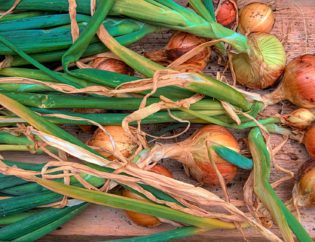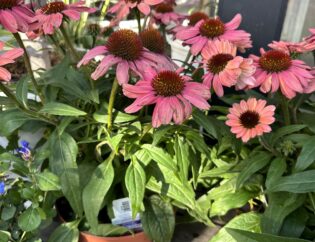Did you know that drip systems put out VERY LITTLE water at one time? Drip emitters either put out as little as 1/2 gallon or up to 4 gallons of water per hour. This depends on which emitter was purchased and installed.
If you are not putting enough water on your plants at each watering, then they will stress. Yes, we had been in a drought and need to cut back, but if you aren’t using water in the landscape to its full potential, then you are still just wasting it.
How much water are you putting on your plants?
Let’s take a 1 gallon emitter (for simplicity’s sake) and say you are running it for 10 minutes. If you divide 128 ounces (# of ounces in a gallon) by 6 (60 minutes in an hour/minutes ran), you will get the number of ounces you are putting on your plant. In this case, it is merely 21 ounces IF the drippers are not clogged. While this may be enough for annuals and smaller perennials, this is not enough for anything bigger such as shrubs and trees.
You still say, “I am supposed to reduce my water use. How does this help?”
Start by INCREASING the length of your drip irrigation cycles. Doing so INCREASES the depth the water penetrates. Which INCREASES deep soil moisture where it does not evaporate and is available to roots longer. This then INCREASES the TIME between waterings, which ultimately DECREASES the amount of water used!
So maybe you don’t know how many gallons per hour your drip emitters put out. Here are a few ways to test:
1. Get a bucket or container to catch water under just one emitter. Run the drip system for 10 minutes. Measure the amount of water in the container, then multiply by 6. This will give you how much water is being put out per hour. You could also run it for 15 minutes (multiply by 4) or 30 minutes (then multiply by 2), or an entire hour and just measure the water.
2. Or skip the math. Get a container, measure 1 gallon of water into it, and mark the water level. Pour the water out. Place the dripper into the marked container and run it for 1 hour. Lastly, look at the level of water in comparison to the mark you made.
Does all that make sense? Here are our best tips for how to use drip irrigation efficiently:
1. Turn off the automatic timer when not needed, in winter or at least turn it back to 1 day per week. Why? The timer doesn’t know if it has rained recently. The timer doesn’t know that today is 10 degrees or cooler than yesterday. All of this factors affect water use!
2. Check the lines frequently to ensure that each dripper is running, is not clogged, and has no leaks.
3. Run the drip system for the appropriate amount of time! After doing the above exercises, if you still aren’t sure how long, just ask us! Hint: It is not how many minutes, but hours! Or read Farmer Fred’s Rant about drip systems here.


